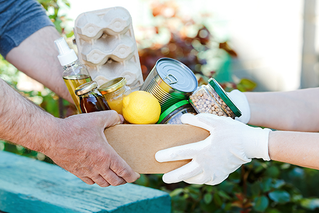
Donating Goods
The what, where, and how of donating your used goods.
At Charity Navigator, we receive questions every day from generous donors looking to donate noncash items to a worthy cause. Below are the steps we recommend taking to maximize the impact of your noncash contribution.
How to Maximize the Impact of Your Household Goods Donation:
1. Determine whether or not the items you wish to donate are useful
Most charities can only make use of items that are new, unused, or nearly new. For clothes, this means they are in good condition without holes or stains. Books should not be missing their covers or pages. Toys should be safe for kids to play with and include all of their pieces. And other household items should be clean and functional.
When donating your used goods, it's always best to remember the Golden Rule, a favorite of mothers and teachers everywhere: “Do unto others as you would have them do to you.”
If it's not a condition that you would wear it, read it, play with it, or use it, why would someone else? Your used goods may go on to be given to people in need or sold to generate revenue for your local nonprofit. Keep this in mind while you’re packing up your donation boxes.
2. Consider selling your items and donating the proceeds to charity
By donating cash instead of goods you allow charities greater flexibility in spending the money to reach the people or animals that need it the most. When you sell the items yourself you also eliminate the for-profit middleman that can take a big cut of the money intended for charity.
When you sell the items yourself you also unburden charities of any time and money they would have to spend on selling or refurbishing the items, allowing them to spend more resources directly fulfilling their missions. Finally, by selling the items yourself, you know the exact value of the donation you can report to the IRS and don't have to worry about estimating the amount for your tax returns.
Facebook Marketplace, online auction sites such as eBay, or classified ads such as craigslist are good places to sell your new and used items. You could also get your friends and neighbors together for a multi-family garage sale, and donate the proceeds to a local charity. Whether or not you decide to sell your items and donate the cash, or you still think your items may be of use to a charity in need, proceed to Step 3 to find the right charity to accept your generous support.
3. Start locally to find the right charity
In order to avoid transportation costs that can lower the impact of your donation, look first in your local community to find a charity to support with your noncash contribution. Call around and ask charities if they accept the kind of items you are looking to donate, and if they don't find out if they can suggest a charity that does.
You can use Charity Navigator's database to find a charity in your local area that might be interested in donated goods by using our feature and searching for charities within your state, city, or within a set radius from your zip code. Within the results list you can also click on "Re-sort by: Overall Rating" to see these charities listed from highest to lowest rated. Once you see a few efficient charities that you think may be interested in your donated goods you can use the contact information provided on their ratings page to discuss with them how you might be able to arrange such an donation.


